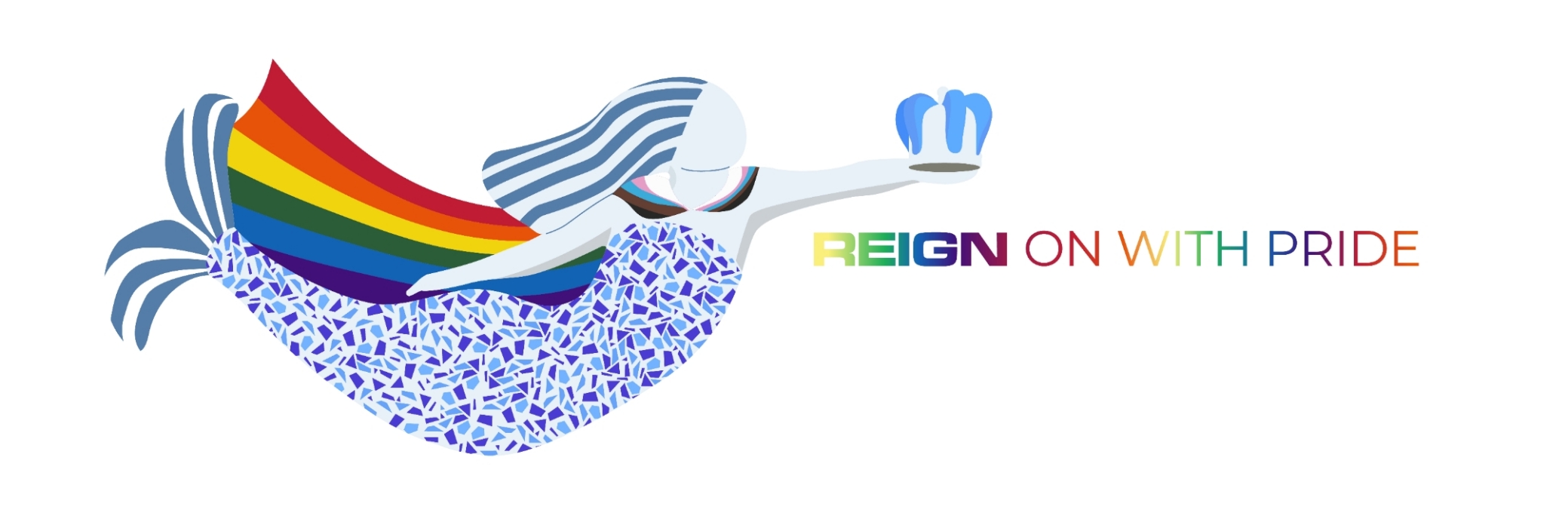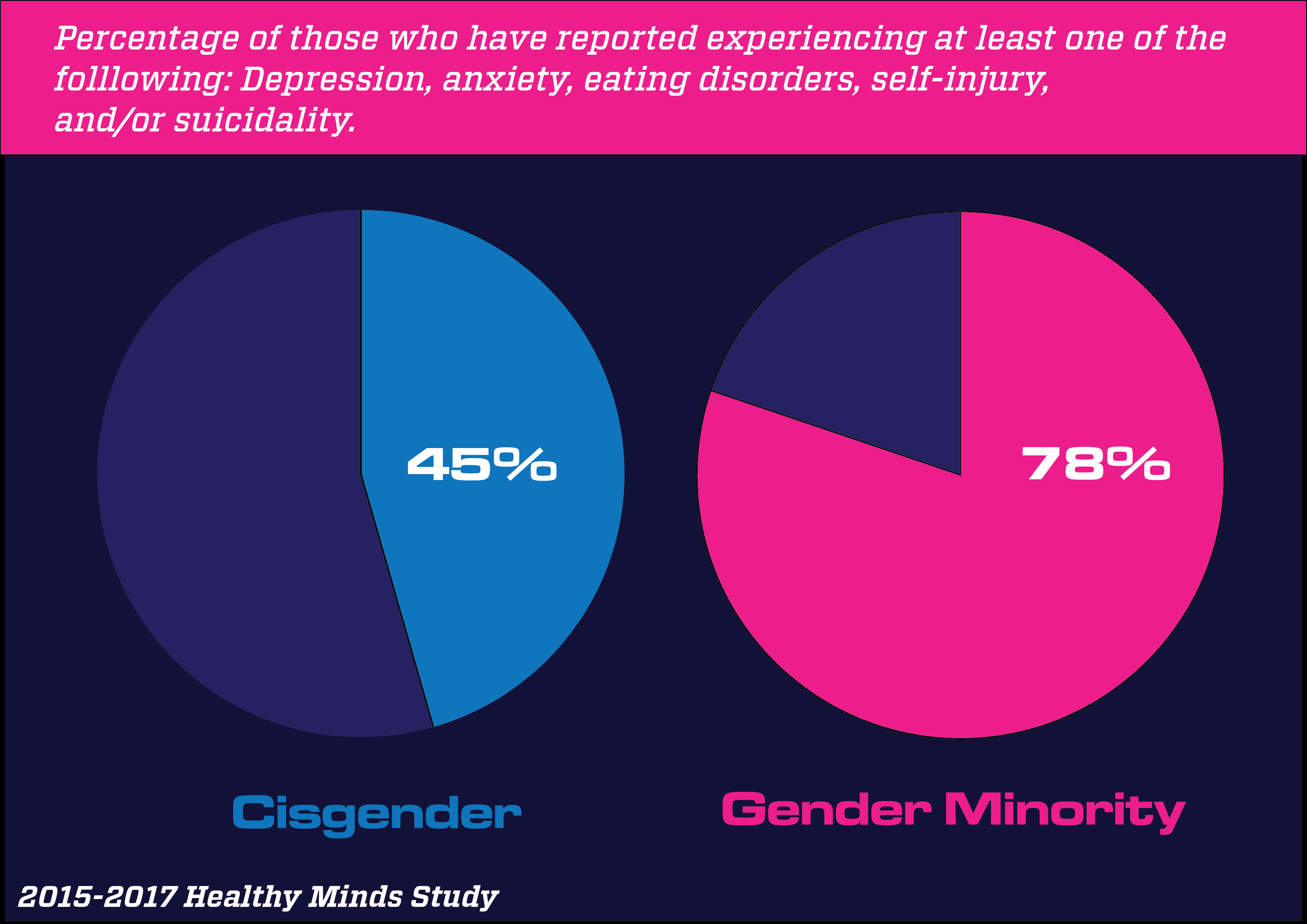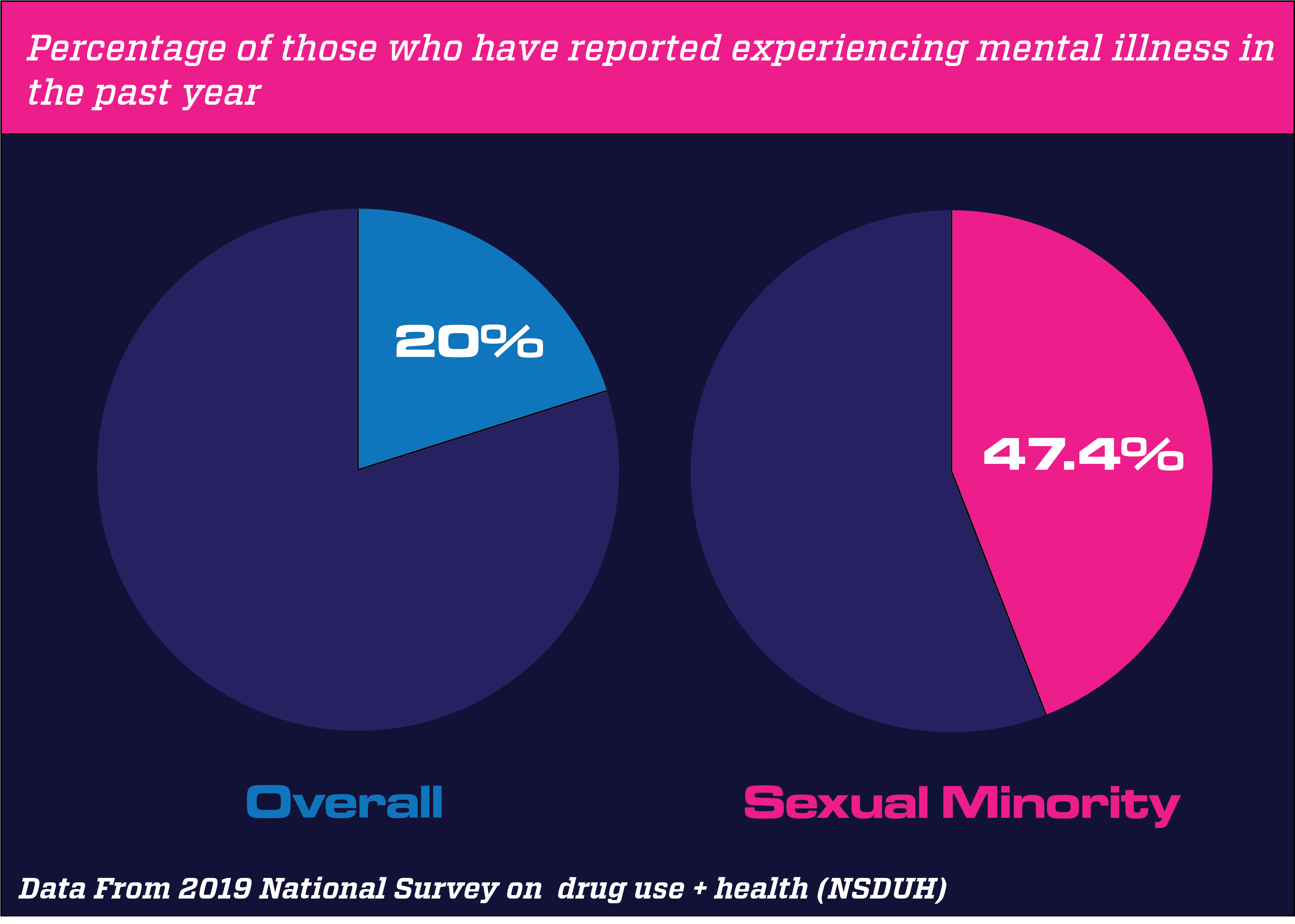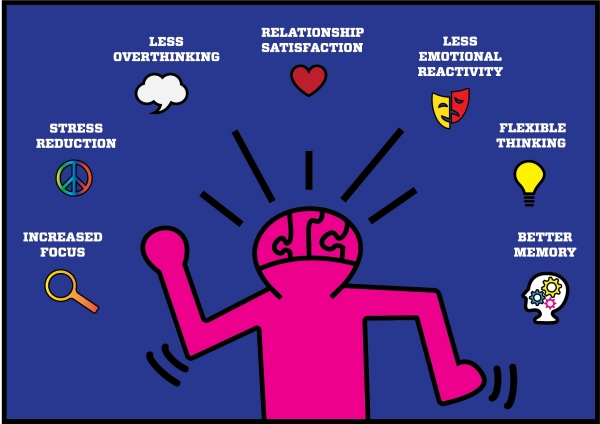Sexual and Gender Minority Mental Health
For decades, scientific literature has provided evidence suggesting that LGBTQIA+ individuals are disproportionately affected by mental health outcomes when compared to their heterosexual and cisgender counterparts. The following infographics provide a brief summary of some findings that parallel this claim.
Coping
Members of the LGBTQIA+ community face stress that is attributable to various sources including general life stressors (e.g., work, school, etc.) as well as minority-specific factors (e.g., prejudice, discrimination, etc.). Individuals cope with perceived stress in a variety of different ways. Using these techniques for healthy coping can lead to: increased focus, stress reduction, less overthinking, relationship satisfaction, less emotional reactivity, flexible thinking, and better memory.
The following are a couple different coping strategies and techniques that many individuals employ to help manage their emotional reactions to stress. Mindfulness Techniques >
ACCEPTS: Distress Tolerance Skills
Emotion regulation skills are often taught within therapeutic contexts as a way of managing our reactions to stress. Some techniques involve distraction. Distraction is different from, and more positive for mental health, than avoidance. Whereas avoidance involves not dealing with emotions, distraction entails recognizing the presence of these emotions while consciously preparing yourself to face them at another point in time. The following acronym "ACCEPTS" presents ways through which people accomplish this. ACCEPTS Infographic >
Mindfulness Techniques
Mindfulness is a flexible form of meditation that emphasizes present-focused thinking and in-the-moment connection with the senses. It has been shown to significantly reduce stress and aid in coping with intense emotions. The list of different mindfulness techniques is extensive, and includes activities such as guided imagery, deep breathing, and more. Provided below is a list of convenient mindfulness techniques to practice. Mindfulness Infographic >
Mindful Listening
- This typically occurs within the context of social settings
- Direct attention to how it feels to speak (e.g. about something stressful, happy, etc.)
- Passively observe your thoughts, feelings and body sensations when talking and when listening to others.
- It may be helpful to ask yourself questions after these mindful interactions such as:
- Did my mind wander during conversation?
- What was the distraction?
- Did my mind judge while listening to others?
- How did it feel to judge?
Mindful Seeing
- Find a space at a window where there are sights to be seen
- Look at everything there is to see. Without labeling anything, take note of color, patterns, and textures.
- Pay attention to the movement of grass/trees/etc. in the breeze. Take note of the different shapes. Try to view everything as if you were someone unfamiliar with these sights.
- Do not fixate on any one thing.
- If you become distracted, gently pull your mind away from those thoughts and notice a color or shape again to put you back in the right frame of mind.
Mindful Breathing
- This exercise does not involve manipulating one's breath. Rather it is focused on placing awareness on the natural occurence/rhythm of breath.
- Begin by breathing normally and slowly drawing focus to your breath.
- It may help to focus on physical cue like the feeling of breath in your nostrils or rise and fall of your chest.
- If your mind wanders, make note and return your attention to natural breathing.
- Continue this for a couple of minutes.
Body Scan
- Get in a comfortable position either sitting or lying down and close your eyes.
- Bring a gentle awareness to the rhythm of your breath, but don't attempt to change it.
- Pay attention to the way your body feels (e.g. temperature, how your clothes feel on different body parts, the surface you are sitting/laying on, etc.)
- Move your attention to the tips of your toes and scan systematically up your body (to the rest of your feet, lower legs, knees, thighs, etc.) paying attention to the way each area feels.





